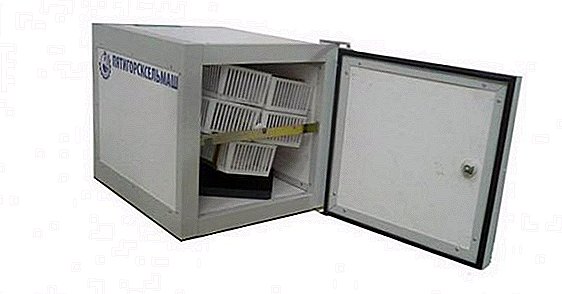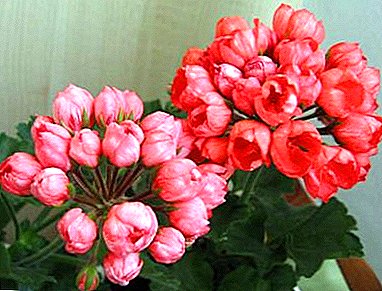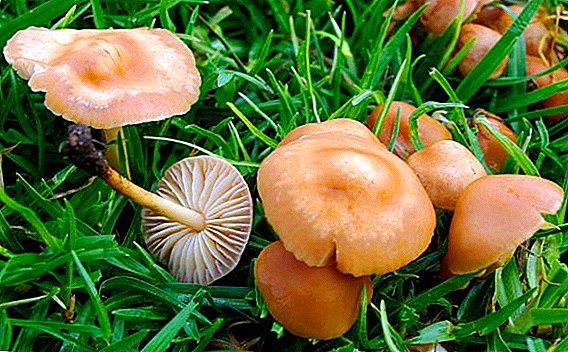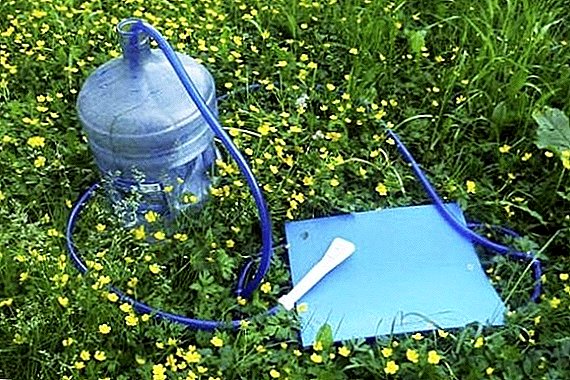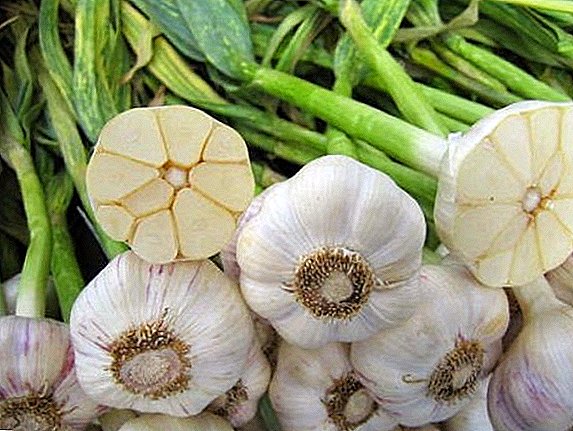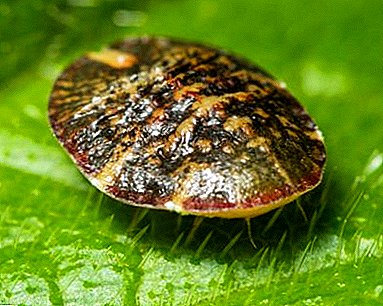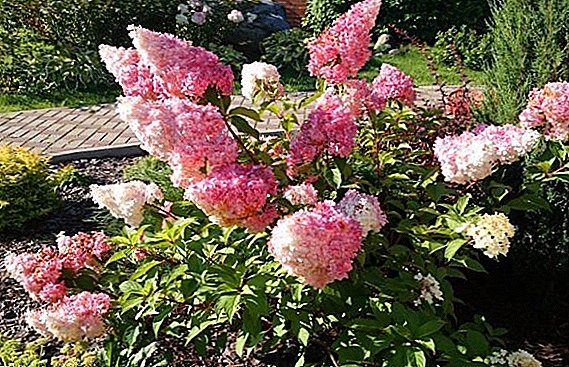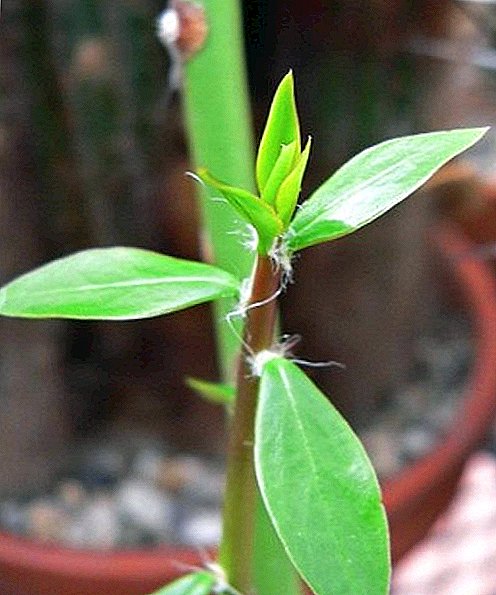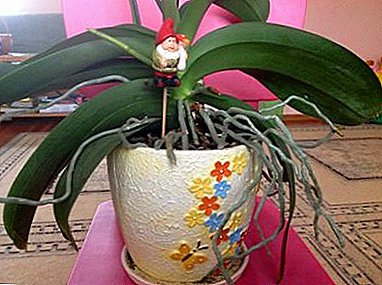
The root system - the guarantee of health of any plant. Orchid differs from other indoor plants in that it can form aerial roots. What are they for and what role do they perform, why did they arise, how to take care of them properly and what to do in general, and what problems may arise? This article and many other questions related to the aerial roots of orchids will be answered.
What it is?
Definition
Orchid aerial roots are thick roots of cylindrical or flat forms.s that are above the pot and are part of the root system of the plant.
Structure
They are in the shell of spongy tissue - velamen. Velamen accumulates moisture and other nutrients and prevents drying and mechanical damage to the roots. Below it are located vascular bundles that deliver moisture to the leaves. Also, the root has a growing tip, no larger than 1 cm in size, it is easily injured, which inhibits plant growth.
Appearance
The color of the roots is a kind of indicator of the stage of development of growth: a young plant of bright green color, and a pale and muffled color speaks of the old root system.
What is different from the usual?
 An orchid is an epiphytic plant that does not grow on the ground and does not have a central root system. It uses roots in order to hold onto other plants or on rocks, where there is more light and air. Aerial roots are located at intervals along the main stem, many grow above the lower leaves.
An orchid is an epiphytic plant that does not grow on the ground and does not have a central root system. It uses roots in order to hold onto other plants or on rocks, where there is more light and air. Aerial roots are located at intervals along the main stem, many grow above the lower leaves.
Why do they grow?
If air roots have appeared above the pot, do not panic and remove them. For some types of orchids, their presence is a natural state, otherwise you need to change the care of the plant.
Why do we need and what role do you play?
Aerial roots perform several functions in the life of an orchid.:
- fix the flower, support its ground part;
- receiving water and sunlight from the air, supply them with an orchid for photosynthesis.
What to do with them?
When a beginner grower looks into a pot with orchid and discovers aerial roots, he begins to wonder: what to do with them? And you need to do the following:
- understand the reason for the appearance of aerial roots;
- find errors in the care of the plant and correct them.
After that, it will only be necessary to wait and observe the flower: if only a few air roots remain, the reason was determined correctly.
If the flower has a lot of roots
What are the reasons?
There are several reasons for the appearance of a large number of aerial roots:
- Air temperature. Their growth increases at high temperatures. Most often, the active growth takes place in winter, when heating radiators heat up the flowerpots on the windowsill and dry the air.
- Excessive watering. With a large amount of moisture orchid forms additional roots, otherwise rot can begin.
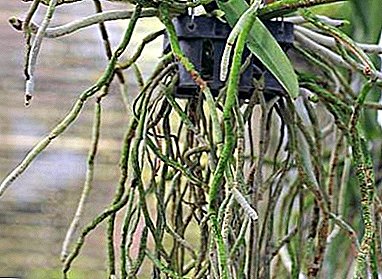 Lack of moisture. Occurs in a room where too low air humidity and watering is rarely done.
Lack of moisture. Occurs in a room where too low air humidity and watering is rarely done.- Lack of light. The orchid root system performs a photosynthetic function and, in the event of a lack of lighting, the roots begin to grow in order to capture more light.
- Dense substrate. Land in a flowerpot with a flower should be loose and well pass air, light and water. Tightly packed substrates may cause decay.
Can I delete?
It is possible to remove overgrown aerial roots, but only if:
- the process of rotting has begun because of too abundant watering;
- they began to dry out due to lack of moisture or dry indoor air.
Tips and tricks
No roots - what does it mean and is it bad?
Air roots may be absent due to lack of light or moisture., as well as if the substrate is chosen incorrectly. It is necessary to transplant the plant, changing the soil and rearrange the pot with orchid in a more comfortable place for it, enriching the soil with nutrients.
Only elevated
In such a situation it is necessary:
- inspect the root system and carefully remove all dead and damaged roots;
- disinfect the cut-off sites with green paint, cinnamon powder, crushed with activated or charcoal;
- place the orchid in a ceramic container with water at room temperature, which must be changed daily and regularly dried the plant;
- make sure that the temperature in the room does not exceed +27 degrees.
Problems and how to deal with them
Shrinking
Causes of Drying:
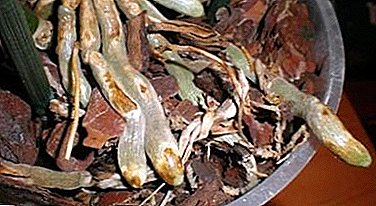 Lack of moisture. Air roots get less moisture than they are in the soil, so they dry out.
Lack of moisture. Air roots get less moisture than they are in the soil, so they dry out.- Injury. Injury caused during transplantation or transportation, also leads to their drying out.
- Burn. Too large doses of fertilizer or bad water for irrigation can burn the root system.
- Dry air indoors causes wrinkling and drying of aerial roots.
- Fungus. Fungal diseases first destroy the leaves and roots in the pot, and then the aerial roots.
In the case of drying of the air roots, they must be immediately cut off and the cutting sites should be treated with an antiseptic.
Rotting
If the roots began to rot - the orchid needs a transplant, for this you need:
- remove the plant from the pot;
- rinse the roots in warm water and wash away the remnants of the soil from them;
- remove all damaged areas, then sanitize sections;
- put the prepared pine bark or other drainage on the bottom of the new pot;
- Carefully place the orchid in a pot and sprinkle with earth without compacting it.
After transplantation, it is necessary to monitor the irrigation regime and the room temperature.
We offer you to watch a video about the transplant of rotten roots orchids:
Care
Important points in the care of a flower with aerial roots:
- You need to hang it if there is such an opportunity. This will allow the roots to grow in length and it will be easy to monitor their condition.
- If it is not possible to suspend an orchid, you need to transplant it into a transparent or translucent container.
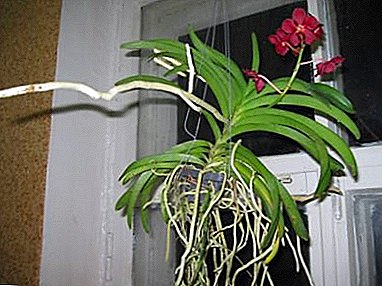 Do not allow direct sunlight on the flower, but the lighting should be sufficient, so if necessary, use additional lighting.
Do not allow direct sunlight on the flower, but the lighting should be sufficient, so if necessary, use additional lighting.- The air temperature should be + 18- + 30 degrees during the day and +16 at night.
- Water the flower on hot days every day, on cold days every 2 days, alternating watering with drying.
- Every month it is necessary to feed the orchid with mineral fertilizers at the rate of 13 grams of fertilizer per 10 liters of water.
- It is necessary to periodically transplant, it should be done after flowering or in spring.
Methods of watering orchids:
- Warm shower. It is necessary to put a flower in a bath and water it from the shower with warm water until the outer roots get a greenish tint. Then wait for about half an hour to let the water completely glass and wipe the leaves with a cloth.
- Dive If the orchid is healthy, you can immerse the pot with it in room temperature water for 30 seconds and remove it to let the water flow.
- Watering can. Using a watering for watering, you need to drive it along the edge of the pot until the water begins to pour water over the edges. Repeat after draining water.
- Spraying The best option for orchids with aerial roots, because they often dry up.
Attention! You can not spray and water the orchid in the evening and at night.
Orchid's aerial roots are not a disease and should not be frightened to find them. In order to have complete confidence that the plant is healthy, you only need to carefully monitor its condition and provide a flower caring care.


 Lack of moisture. Occurs in a room where too low air humidity and watering is rarely done.
Lack of moisture. Occurs in a room where too low air humidity and watering is rarely done. Lack of moisture. Air roots get less moisture than they are in the soil, so they dry out.
Lack of moisture. Air roots get less moisture than they are in the soil, so they dry out. Do not allow direct sunlight on the flower, but the lighting should be sufficient, so if necessary, use additional lighting.
Do not allow direct sunlight on the flower, but the lighting should be sufficient, so if necessary, use additional lighting.